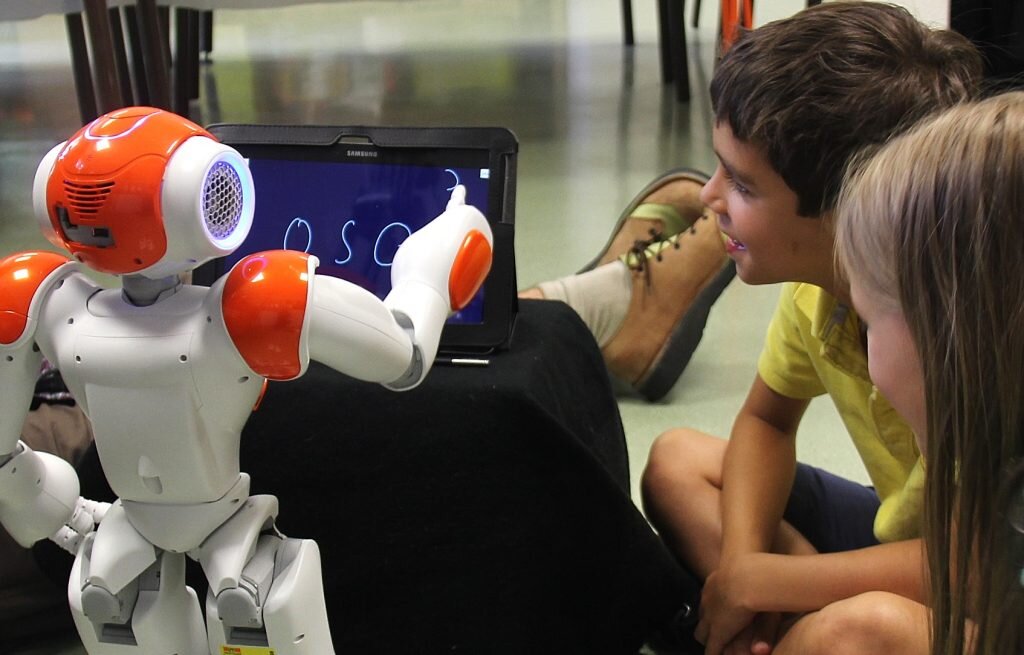
by Analytics Insight
March 28, 2021
Concordia University came under fire in January 2021 when a student discovered that the instructor teaching his course had died two years earlier. “HI EXCUSE ME,” the student tweeted, “I just found out the prof for this online course I’m taking *died in 2019* and he’s technically still giving classes since he’s *literally my prof for this course* and I’m learning from lectures recorded before his passing.” The university had continued listing the instructor as the professor for an art history course and relied on lectures and lesson plans completed before the instructor’s death to teach students while using assistants to grade student work and answer student questions.
This strange situation, however, raised an important question: If it’s possible to run online courses with materials from dead instructors, could we also do the same with material generated by artificial intelligence? At least with AI, the intelligence behind the screen would still be there.
Artificial intelligence is transforming education, but it remains an open question whether AI can replace live, in-person instructors entirely.
The Digital Classroom
Already, classrooms are moving toward a digital future. Many companies provide software platforms that let a single instructor oversee massive numbers of students, managing their learning remotely with the help of digitized lessons and grading software. Some schools use AI to analyze and identify their students’ strengths and weaknesses in order to tailor the curriculum to their needs. So-called “adaptive assessment” programs can make homework questions easier or harder depending on individual students’ success. In such software, the program uses student performance to develop what is essentially a personalized curriculum. In that sense, this type of machine-based learning can be compared to artificial intelligence engaging students in real learning.
However, there are problems that have emerged in the digital classroom. Some studies have found that students do not engage as completely with digital learning and AI instruction as they do with real-world instruction. As a result, their performance doesn’t always measure up.
So why do students treat digitized learning differently?
Where AI Doesn’t Measure Up
One of the most important differences between in-person and AI learning is that an AI instructor isn’t a real human being. Evolution has honed the human mind to respond to other humans, but when the instructor is just text on a screen—or we know it isn’t human—we don’t empathize with it the same way, or develop the same sense of engagement. Similarly, it’s difficult to imagine a computer caring about us the same way a real instructor might empathize with us and care about us. All told, this make it difficult for students to engage with a machine with the same level of involvement as a human.
Some argue, too, that robots aren’t able to inspire students the same way that a real person might. For example, in a classroom, a student might ask a challenging question that inspires the instructor to make cross-connections, go off in a unique direction, or discuss the topic in ways that are unexpected. A machine, however, can’t go off on a tangent or connect to other areas of learning and will instead answer the question in a rote way, providing information but not inspiration.
In the end, learning isn’t just about delivering facts and information. It’s about creating meaning. While machines can teach skills effectively, they have yet to develop an ability to create meaning. A machine can gather data about students, but it can’t yet understand a student holistically in order to appeal to that student, understand the student’s needs, and show how learning can be meaningful to them.
Where AI Is Going Next
So, while AI isn’t going to completely replace the role of the educator anytime soon, it is going to change how educators work with students—and it might well threaten the job of teaching assistants. AI might not be able to empathize with the students, but it sure can process data and push through grades and evaluations, and computer analytics. We already use computers to mechanically grade multiple-choice quizzes, and services like Turnitin evaluate papers to search for signs of plagiarism. Even gradebooks are now digitized, calculating final grades from data inputted during the term.
In the coming years, AI will continue to take over the routine tasks of teaching. Already, some instructors have developed AI interfaces that can handle routine student inquiries, freeing instructors to focus their limited time on complex or unique student queries. In Japan and South Korea, artificial intelligence-powered robots are used in language instruction, giving students the opportunity to practice their language skills by engaging AI in chats.
Many believe that the future of AI in the classroom is as an enhanced digital assistant, proctoring tests, handling routine inquiries, providing data and supporting information, and tailoring assignments in response to student needs. But a real person will still need to be there to watch over it all.
However, as more homework is graded by machine, more students will make use of professional online academic writing services in order to get help with their papers and essays written by someone from scratch. An expert team of legitimate essay writers from Write My Paper Hub services will write papers for students, and more college students will feel free to use and pay them online to get ahead. After all, if no human actually reads assignments, does it matter who wrote them or what they say? As long as the machine grades it well, isn’t that enough? This is one ethical issue that AI can’t solve on its own.
About Author
More info about author